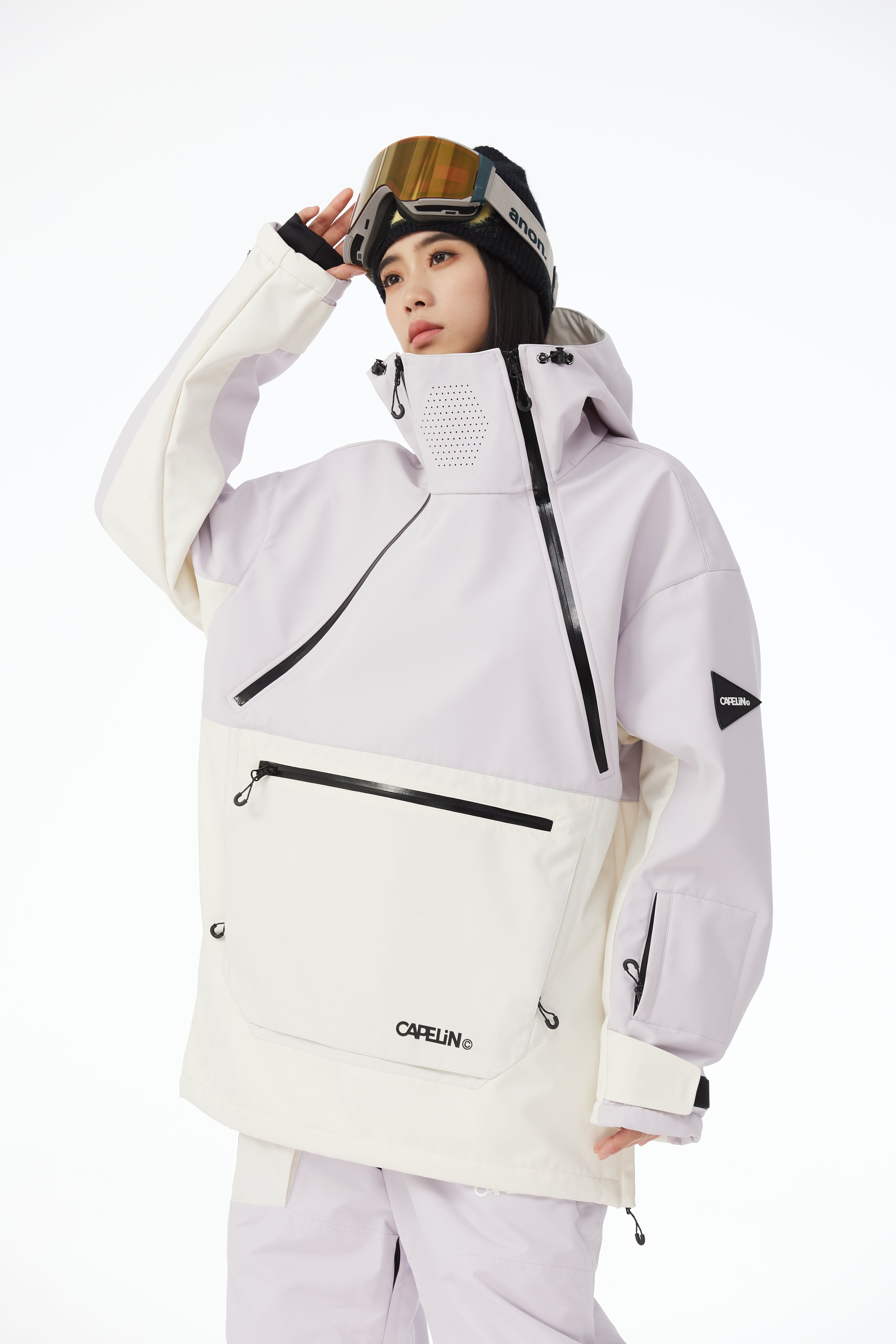Introduction
L'appel de la nature vous murmure-t-il ? La joie d'une réussite randonnée Le plaisir réside non seulement dans la destination, mais aussi dans la tranquillité d'esprit et la liberté que procure une préparation minutieuse. On ne peut se détendre pleinement et s'immerger dans la beauté de la nature que lorsqu'on a confiance en sa capacité à affronter tous les imprévus du sentier. Ce guide vous accompagnera tout au long du parcours. comment se préparer pour une randonnée, de la planification de votre itinéraire au choix de votre équipement et à la gestion des imprévus, pour vous assurer d'être vraiment prêt à partir.
Contenu
● Élaborer un plan pour votre randonnée
● Que porter pour une randonnée ?
● Quels problèmes pourriez-vous rencontrer au cours de cette activité et comment les résoudre ?
● Derniers préparatifs avant votre randonnée
Élaborer un plan pour votre randonnée

Avant même de préparer votre équipement, un plan solide est la base d'un voyage réussi.
Commencez par étudier votre itinéraire en détail : distance totale, dénivelé positif, temps estimé et, surtout, l’emplacement des points d’eau et des campings.
Ensuite, évaluez honnêtement votre condition physique et celle de vos compagnons, ainsi que votre expérience, et planifiez vos étapes quotidiennes en conséquence. Prévoyez une marge de manœuvre en cas de mauvais temps ou de fatigue soudaine.
Enfin, choisissez votre hébergement : emporterez-vous une tente ou logerez-vous en refuge ? Ce choix influencera directement la quantité et le type de matériel à emporter. Une bonne préparation vous permettra d’aborder le voyage sereinement.
Que porter pour une randonnée ?

La règle d'or pour Que porter pour une randonnée ? Il s'agit du « système de superposition ». Ce système vous permet de vous adapter facilement aux variations de votre niveau d'activité et aux conditions météorologiques, tout en vous gardant au sec et à l'aise.
● Couche de base: Il s'agit de votre sous-vêtement, porté à même la peau. Son rôle est d'évacuer la transpiration pour vous garder au sec. Privilégiez les matières synthétiques ou la laine mérinos et évitez le coton, car il retient l'humidité et sèche lentement.
● Couche intermédiaire: Il s'agit de votre principale isolation. Une polaire légère ou une doudoune fine emprisonnent la chaleur de votre corps. Le choix de votre couche intermédiaire Cela dépend de votre sensibilité personnelle au froid et de la température que vous prévoyez ; il devrait être facile à enfiler et à retirer.
● couche externe: Voici votre bouclier. Un bouclier de haute qualité veste coupe-vent ou, encore mieux, un coupe-vent imperméableElle est essentielle. Elle doit vous protéger du vent et de la pluie tout en étant suffisamment respirante pour permettre à la vapeur d'eau produite pendant l'effort de s'évacuer, évitant ainsi un intérieur froid et humide.
Pour le bas de votre corps, une paire confortable et résistante de pantalon cargo Les pantalons de randonnée offrent une grande liberté de mouvement et permettent d'emporter le petit nécessaire. N'oubliez pas les chaussettes de randonnée adaptées et des chaussures de marche bien rodées !
Quels problèmes pourriez-vous rencontrer au cours de cette activité et comment les résoudre ?

Le milieu montagnard est imprévisible et, même avec la meilleure préparation, des surprises peuvent survenir. Savoir réagir est essentiel pour la sécurité.
● Problème 1 : Changements météorologiques rapides, refroidissement éolien et pluie
C'est l'un des défis les plus courants et les plus dangereux en montagne. Un ciel dégagé peut se transformer en vent et en pluie en l'espace d'une heure. C'est là que votre système de vêtements superposés, soigneusement choisi, fait toute la différence.
Solution: Lorsque la température chute et qu'il pleut ou que le vent se lève, arrêtez-vous immédiatement et enfilez votre coupe-vent imperméable et couche intermédiaireUn bon veste coupe-vent Elle bloque complètement l'effet de refroidissement éolien qui vous prive de votre chaleur corporelle, et son imperméabilité vous protège de la pluie. Surtout, sa respirabilité empêche la transpiration de s'accumuler à l'intérieur lors de longues marches ou de mouvements brusques. Par ailleurs, votre couche intermédiaire (comme une polaire) continue d'isoler. N'oubliez pas, mieux vaut prévenir que guérir : superposez les couches. avant Vous commencez à avoir froid.
● Problème n° 2 : Se perdre en pleine randonnée
Il est facile de s'égarer aux intersections de sentiers inconnus ou mal balisés, surtout lorsque la visibilité diminue.
Solution:
○ ARRÊTEZ immédiatement : La règle la plus importante lorsque vous soupçonnez d'être perdu est de vous arrêter ! N'avancez pas à l'aveuglette, car cela ne fait généralement qu'empirer la situation.
○ Évaluer calmement : Munissez-vous de votre carte, de votre boussole ou de votre GPS. Essayez de localiser votre dernière position connue. Observez attentivement le relief environnant (crêtes, cours d'eau, etc.) et comparez-le à votre carte.
○ Revenez sur vos pas : Si vous parvenez à identifier approximativement où vous avez commis l'erreur, la méthode la plus sûre consiste à retracer soigneusement votre chemin jusqu'au dernier point dont vous étiez sûr.
○ Signal de détresse : Si vous ne parvenez pas à vous orienter seul et que vous êtes accompagné, utilisez un sifflet pour envoyer le signal de détresse international (trois coups brefs, répétés à une minute d'intervalle), ou portez des vêtements de couleurs vives pour attirer l'attention.
● Problème 3 : Défaillance de l'engrenage, e.gperte d'imperméabilité de votre veste
Après une randonnée prolongée sous la pluie, vous remarquerez peut-être que votre vestes coupe-vent La surface ne perle plus à l'eau mais se sature. Cela indique une défaillance temporaire de son imperméabilité. Déperlant durable Revêtement déperlant durable (DWR). Bien que ce revêtement ne vous mouille pas immédiatement (l'imperméabilité étant assurée par la membrane interne), il provoque l'« imprégnation » du tissu, réduisant considérablement sa respirabilité et emprisonnant la transpiration.
Solution:
○ Protection avant le voyage : Avant votre voyage, vérifiez votre coupe-vent imperméableSi l'eau ne perle pas et ne s'écoule pas, vous devriez utiliser un traitement spécialisé à pulvériser pour rétablir ses performances hydrofuges.
○ Intervention sur le terrain : Si cela se produit pendant votre randonnéeCommencez par essuyer l'intérieur de votre veste pour réduire la condensation. Ensuite, ralentissez votre rythme pour limiter la transpiration et la chaleur corporelle, et utilisez activement la ventilation (comme les zips d'aération sous les bras) pour évacuer la chaleur et l'humidité. Surtout, assurez-vous que votre couche intermédiaire Elle est fabriquée dans un matériau qui conserve une certaine isolation même humide (comme la laine ou la polaire en polyester), de sorte que si les performances de votre veste se dégradent, vous disposez toujours d'une couche isolante fiable.
Derniers préparatifs avant votre randonnée
Une fois votre plan et votre équipement prêts, la dernière étape consiste à effectuer les vérifications de dernière minute et à faire vos bagages.
● Préparez votre sac: Suivez le principe « objets légers en bas, objets lourds près du dos et plus haut ». Rangez les articles de première nécessité, comme un imperméable et une lampe frontale, dans les poches les plus accessibles.
● Laissez votre itinéraire: Absolument essentiel : fournissez un plan détaillé de votre randonnée (itinéraire, calendrier, compagnons) à un ami ou un membre de la famille de confiance.
● Vérifications finales: La veille de votre départ, consultez les dernières prévisions météorologiques. Assurez-vous que tous vos appareils électroniques sont complètement chargés et téléchargez des cartes hors ligne ainsi que les numéros importants.
Conclusion
Une préparation minutieuse est la magie qui transforme un randonnée en une expérience véritablement libre et agréable. Elle vous permet d'interagir avec la nature sauvage en toute confiance et sécurité, au lieu de simplement y réagir. Maintenant que vous le savez comment se préparer pour une randonnée, de l'élaboration d'un plan à la compréhension des secrets complexes de Que porter pour une randonnée ?, il est temps de revérifier votre couche intermédiaire et votre veste coupe-ventPuis, le cœur calme et plein d'espoir, poursuivez votre chemin et abordez le prochain virage.












